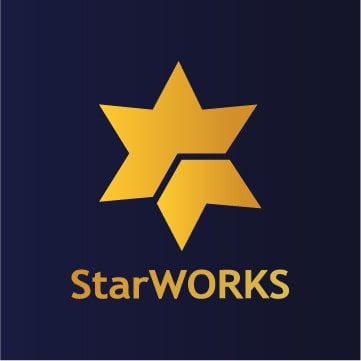Illustration of DeFi, photo by Tab Trader on Pexels
The financial landscape is undergoing a seismic shift, driven by the rise of decentralized finance, or DeFi. This innovative movement leverages blockchain technology to create a more open, transparent, and accessible financial system.
As traditional banking faces increasing scrutiny and demand for change, DeFi is emerging as a viable alternative, offering a range of services without the need for intermediaries. In this article, we'll explore what DeFi is, why it's important, how it works, and introduce StarWORKS' entry into the DeFi space with the STARX Token.
What is Decentralized Finance (DeFi)?
Decentralized Finance, called DeFi, is a financial ecosystem built on blockchain technology that operates without traditional intermediaries like banks, brokers, or exchanges. Instead, DeFi platforms use smart contracts—self-executing contracts with the terms of the agreement directly written into code—to facilitate and verify transactions. These smart contracts run on decentralized networks like Ethereum, ensuring transparency, security, and immutability.
DeFi encompasses a wide range of financial services, including lending and borrowing, trading, insurance, and asset management, all accessible to anyone with an internet connection. DeFi aims to democratize finance by eliminating intermediaries, making it more inclusive and efficient.
Why is DeFi Important?
DeFi represents a significant shift in how financial services are provided and accessed. Here are some key reasons why DeFi is important:
- Financial Inclusion: DeFi provides access to financial services for unbanked or underbanked individuals, particularly in regions with limited banking infrastructure. All that’s needed is an internet connection and a digital wallet.
- Transparency and Security: Transactions on DeFi platforms are recorded on public blockchains, ensuring transparency and reducing the risk of fraud. Cryptographic security measures also protect users' funds and data.
- Reduced Costs: By cutting out intermediaries, DeFi can significantly lower the costs associated with financial transactions. This is especially beneficial for cross-border payments, which often involve high fees and lengthy processing times.
- Innovation and Flexibility: DeFi platforms are highly programmable, allowing innovative financial products and services to be created. Users can customize their financial strategies and leverage new opportunities, such as yield farming and liquidity mining.
- Censorship Resistance: Since DeFi operates on decentralized networks, it is less susceptible to censorship or government intervention. This ensures that users retain control over their assets and transactions.
How Does Decentralized Finance (DeFi) Work?
DeFi operates on a decentralized network of computers, often called nodes, that maintain a shared ledger of transactions. Here's a closer look at the key components and mechanisms that power DeFi:
- Blockchain Technology: The foundation of DeFi is blockchain, a distributed ledger technology that records transactions across a network of computers. This ensures that data is transparent, secure, and immutable.
- Smart Contracts: These are self-executing contracts with the terms of the agreement encoded in software. Smart contracts automatically enforce the rules and execute transactions when predefined conditions are met, eliminating the need for intermediaries.
- Decentralized Applications (dApps): dApps run on a decentralized network and offer a wide range of financial services. Examples include Uniswap for decentralized trading, Aave for lending and borrowing, and Compound for interest-earning accounts.
- Tokens and Stablecoins: DeFi platforms often use tokens to represent assets or facilitate transactions. Stablecoins, pegged to a stable asset like the US dollar, provide stability in an otherwise volatile market, making it easier to conduct transactions and store value.
- Liquidity Pools and Yield Farming: Liquidity pools are tokens locked in a smart contract that provide liquidity for particular token pairs in decentralized exchanges. Yield farming involves providing liquidity to certain token pairs in exchange for rewards, offering users a way to earn passive income in addition to simply holding crypto tokens.
Conclusion
Decentralized Finance (DeFi) is reshaping the financial landscape, offering a more inclusive, transparent, and efficient system. DeFi empowers individuals worldwide to access financial services and innovate freely by eliminating intermediaries and leveraging blockchain technology.
With the STARX Token, StarWORKS is at the forefront of this revolution, providing users with enhanced opportunities and a secure, interoperable platform. Embrace the future of finance with DeFi and the STARX Token, and discover the potential of a truly decentralized financial ecosystem.




